In the heart of the technological revolution, the integrated circuit (IC) board factory stands as a cornerstone of modern electronics. These factories are not just assembly lines; they are beehives of innovation, precision, and relentless pursuit of excellence. Today, we delve into the fascinating world of IC board manufacturing, exploring the intricacies, the challenges, and the groundbreaking solutions that drive this industry forward.
The Evolution of the Integrated Circuit Board Factory
In the annals of technological advancement, the journey of the integrated circuit (IC) board factory has been nothing short of remarkable. Once a realm of arcane complexity, the production of IC boards has transformed into a highly sophisticated and streamlined process, underpinning the modern digital revolution. The evolution of the IC board factory is a story of innovation, precision, and relentless pursuit of excellence.
Once, IC boards were a rarity, a novelty in the world of electronics. The process involved in their creation was labor-intensive and error-prone, requiring meticulous hand assembly and countless hours of meticulous work. The boards themselves were large, bulky, and prone to failure due to the fragility of the components.
Fast forward to today, and the landscape has changed dramatically. The advent of automated machinery and cutting-edge technology has revolutionized the production of IC boards. These boards are now compact, reliable, and integral to the functioning of nearly every electronic device we use.
The early days of IC board manufacturing were marked by significant limitations. Components were hand-soldered onto the boards, and the entire process required a level of craftsmanship that few could master. As a result, production was slow, expensive, and limited in scale. The quality of the boards was often inconsistent, and the cost of repair or replacement was high.
However, the late 20th century brought a turning point with the development of automated assembly lines. These lines allowed for the consistent placement of components with precision that was previously unattainable. The introduction of surface mount technology (SMT) further transformed the industry, enabling the placement of smaller, more complex components with ease.
As technology advanced, so too did the capabilities of IC board factories. The introduction of computer-aided design (CAD) and computer-aided manufacturing (CAM) systems allowed engineers to design boards with unprecedented complexity and efficiency. These systems could simulate the production process before a single component was placed, reducing errors and optimizing the manufacturing flow.
With the rise of the personal computer, the demand for IC boards skyrocketed. Factories had to adapt, increasing their scale and efficiency to meet the market’s needs. The introduction of robotics in the production line allowed for even greater speed and precision. Robots could handle components with a level of delicacy that human hands could not, reducing the risk of damage during assembly.
The miniaturization of electronic devices in the late 20th and early 21st centuries presented new challenges to the IC board industry. As devices became smaller, the components on the boards had to shrink as well. This led to the development of finer and finer processes, such as 0.01-micron manufacturing, which allowed for more components to be packed into a smaller space.
Today, IC board factories are at the forefront of innovation, not just in the electronics industry but in the broader context of technology. The introduction of materials such as high-frequency laminates and flexible substrates has expanded the possibilities for board design and application. These advancements have allowed for everything from high-speed communication in smartphones to the intricate circuitry in IoT devices.
Environmental concerns have also played a significant role in the evolution of IC board factories. The industry has moved towards more sustainable practices, including the use of lead-free solders and recycling programs for waste materials. These efforts not only minimize the environmental impact but also reduce costs in the long run.
The evolution of the IC board factory is a testament to human ingenuity and the relentless pursuit of progress. From the large, error-prone boards of the past to the compact, reliable boards of the present, the industry has come a long way. The future promises even more advancements, with the potential for even more complex and efficient IC board production methods. The journey of the IC board factory is far from over, and it remains a key driver in the ever-evolving landscape of electronics.
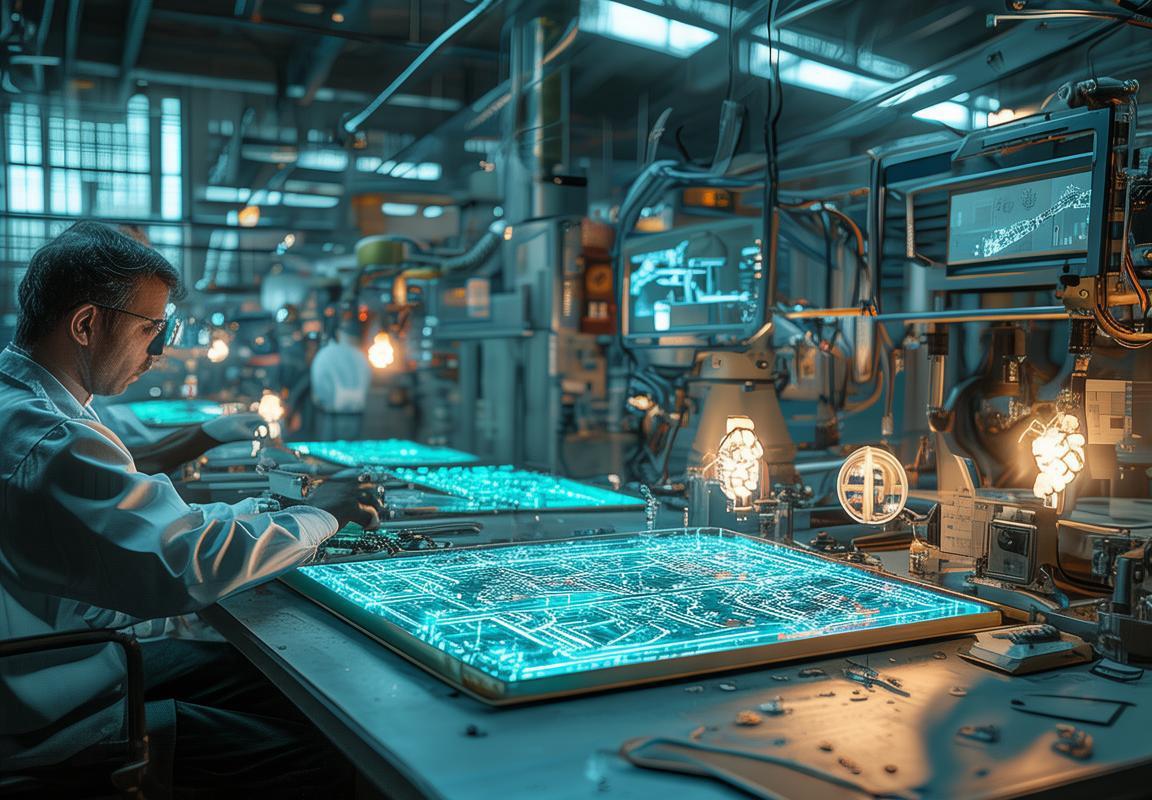
Understanding the Basics of an IC Board Factory
In the heart of modern electronics manufacturing, the integrated circuit (IC) board factory stands as a testament to human ingenuity and technological prowess. These factories, often bustling with activity, are the backbone of the electronics industry, producing the essential components that power our devices. Understanding the basics of an IC board factory reveals a complex and intricate process that combines precision, innovation, and efficiency.
The journey begins with raw materials, typically including copper, glass fiber, and various electronic chemicals. These ingredients are meticulously selected and processed to ensure the highest quality. The copper, for instance, is rolled into thin sheets and etched with intricate patterns, while the glass fiber is treated to create a durable base for the circuitry.
Once the materials are prepared, they are laid out on a large, flat surface, where the first layer of the IC board is formed. This layer, known as the core, is made from the treated glass fiber, providing the structural integrity needed for the entire board. It’s a delicate balance between strength and flexibility, ensuring the board can withstand the rigors of production and use.
Next comes the lamination process, where the copper sheets are adhered to the glass fiber core. This step requires extreme precision, as the copper layers must be placed with exact alignment to create the desired circuit paths. Advanced machinery is used to bond the layers together, using heat and pressure to ensure a strong, durable bond.
The copper layers are then subjected to a process called etching. Using a chemical solution, the unwanted parts of the copper are removed, leaving behind the intricate patterns that define the electrical connections. This process is akin to carving a masterpiece, with each circuit path meticulously designed to meet the requirements of the electronic components that will eventually be mounted on the board.
After etching, the board is treated with a protective coating. This layer not only shields the copper from environmental hazards but also provides a surface for the electronic components to be attached. It’s a crucial step, as the coating must be uniform and resistant to wear and tear.
The next phase involves the creation of the electrical connections, known as vias. These are tiny holes that allow the electrical signals to pass through the layers of the board. The vias are drilled, plated, and insulated, ensuring that the electrical flow is smooth and uninterrupted.
With the structural layers in place, the board moves on to the silk-screening process. This is where the component designations and other markings are applied. The silk-screening process uses a stencil and an ink to transfer the patterns onto the board, making it easier for assemblers to place the components correctly.
The components themselves are then placed onto the board. This is a highly automated process, with pick-and-place machines handling the placement of resistors, capacitors, and other electronic parts with incredible accuracy. The machines are calibrated to the smallest tolerances, ensuring that every component is in the right place.
Once the components are in place, the board undergoes a series of tests to ensure that the circuitry is functioning correctly. These tests can include electrical tests, thermal tests, and functional tests, all designed to uncover any defects or issues before the board is considered ready for use.
The final step in the process is the coating of the entire board with a protective material, such as a solder mask. This not only protects the components from damage but also provides a smooth surface for the soldering process. The board is then baked to remove any moisture and ensure the coating is fully cured.
Throughout this entire process, quality control is paramount. Each stage is inspected for defects, and any board that fails to meet the stringent standards is discarded. This dedication to quality ensures that the IC boards that leave the factory are reliable and durable.
In summary, the basics of an IC board factory encompass a series of meticulously planned and executed steps, from the selection of raw materials to the final coating of the board. It’s a blend of human craftsmanship and machine precision, where every detail is crucial to the success of the final product. The end result is a complex, yet beautifully designed, integrated circuit board that powers the world around us.
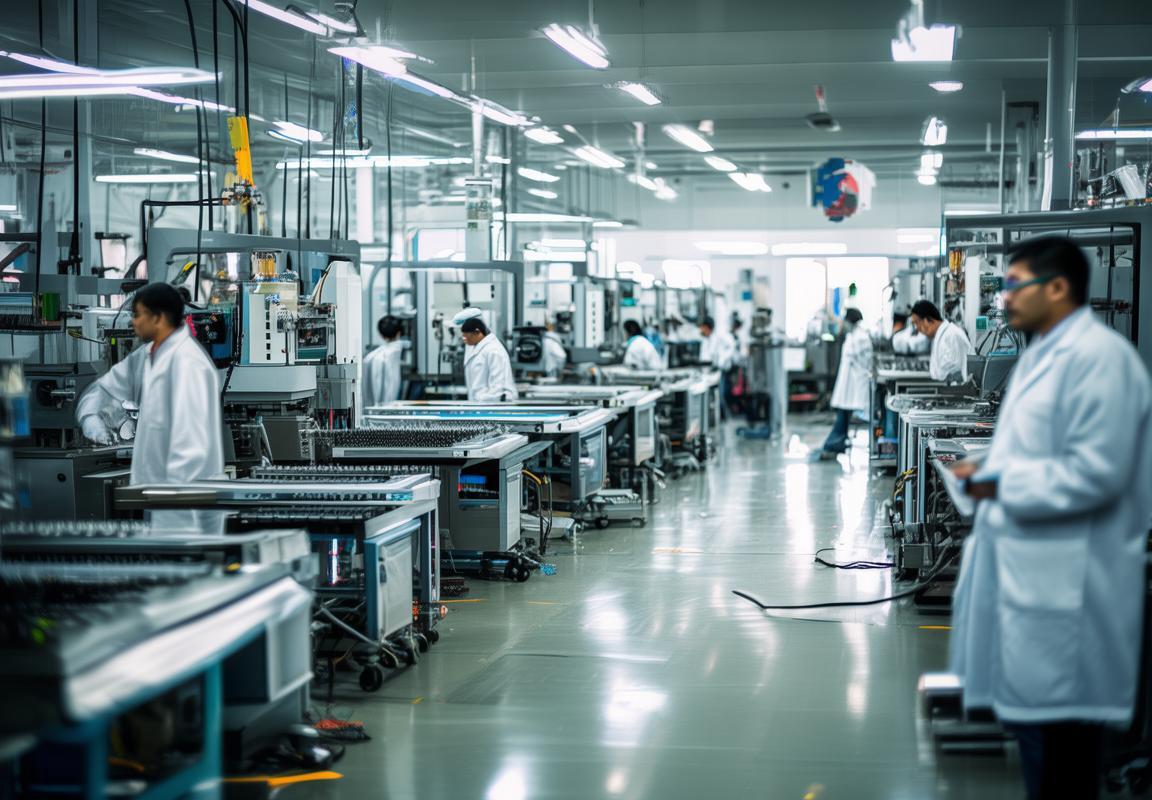
The Role of Technology in IC Board Manufacturing
In the realm of electronics, the integrated circuit (IC) board is the backbone of modern technology. The role of technology in IC board manufacturing is paramount, driving efficiency, precision, and innovation. Here’s a glimpse into how technology shapes this crucial process:
The advent of photolithography revolutionized the world of IC board manufacturing. This technique allows for the precise transfer of patterns onto a silicon wafer, enabling the creation of intricate circuits. The use of advanced photolithography systems has led to smaller, faster, and more powerful ICs, pushing the boundaries of what’s possible in electronics.
Automated pick-and-place machines have become indispensable in IC board assembly. These high-speed robots can place thousands of tiny components with incredible accuracy, reducing human error and increasing production rates. The integration of AI and machine learning algorithms in these machines has further optimized the placement process, ensuring the most efficient use of space on the board.
Chemical etching and laser cutting technologies have evolved to achieve finer lines and higher resolution patterns on IC boards. The ability to etch at the nanoscale level has opened up new possibilities for complex circuit designs, making way for advancements in fields like 5G communication and advanced computing.
Advanced material science plays a pivotal role in IC board manufacturing. The development of high-performance materials like copper, gold, and aluminum has allowed for better conductivity and thermal management, crucial for the efficient operation of electronic devices. Additionally, the use of flexible substrates has expanded the applications of IC boards, from traditional PCBs to flexible circuits used in smartphones and wearable technology.
The integration of robotics and automation extends beyond assembly to include testing and quality control. Automated optical inspection (AOI) systems can scan entire boards for defects, ensuring that only the highest quality products leave the factory. Advanced testing equipment like X-ray machines and thermal analyzers provide in-depth analysis, guaranteeing the reliability of each IC board.
In the realm of design, computer-aided design (CAD) software has become an essential tool for engineers. These programs allow for the creation of complex circuit layouts with ease, providing a virtual environment to test and refine designs before they are sent to production. The use of 3D modeling and simulation further enhances the design process, allowing engineers to visualize and optimize the performance of IC boards.
The rise of additive manufacturing, or 3D printing, has also impacted IC board manufacturing. While not yet widely used for mass production, 3D printing offers the potential for on-demand manufacturing, reducing waste and allowing for the creation of customized boards with complex geometries.
Energy efficiency is a growing concern in IC board manufacturing. The development of low-power design techniques and materials has become increasingly important, as it directly impacts the energy consumption of electronic devices. Advanced thermal management solutions, such as heat sinks and liquid cooling systems, are being integrated into the manufacturing process to ensure that IC boards can dissipate heat effectively.
The Internet of Things (IoT) has spurred the need for smaller, more energy-efficient IC boards. This has led to the development of specialized technologies like System-in-Package (SiP), which integrate multiple ICs into a single package, reducing size and power consumption. SiP technology is a testament to how technology is shaping the future of IC board manufacturing.
In conclusion, technology is the driving force behind the evolution of IC board manufacturing. From the initial design phase to the final product, technological advancements continue to push the boundaries of what’s possible, ensuring that IC boards remain at the forefront of innovation in the electronics industry.

A Day in the Life: Inside an IC Board Factory
The factory hums with activity as dawn breaks, a symphony of machinery and human endeavor. The day at an integrated circuit (IC) board factory is a testament to precision, efficiency, and the relentless pursuit of perfection. Workers begin their shift, donning protective gear, as they navigate the intricate web of production lines.
As the sun casts a golden glow through the factory windows, technicians scan their badges to enter the cleanroom, a critical space where the smallest contaminants can spell disaster. The air is filtered to a purity that would make many hospitals proud, and the temperature is meticulously controlled to maintain a stable environment. Here, every move is deliberate, as workers place delicate chips onto their boards with the care of a sculptor handling precious marble.
The day progresses with a rhythm all its own. Automated machines print the circuit patterns with a precision that would make a fine artist blush. Each board is a canvas, its surface covered in intricate lines that form the backbone of the electronic devices we rely on daily. Robots move with surgical precision, aligning components with a degree of accuracy that is almost supernatural.
The human touch is also vital. Engineers inspect the boards under powerful microscopes, ensuring that each connection is perfect. Their eyes scan the circuits for any imperfections, their hands occasionally adjusting tiny components with the aid of precision tools. It’s a dance of man and machine, where each contributes to the seamless symphony of production.
As the morning shifts into afternoon, the factory’s pace quickens. Workers move swiftly along the lines, placing components on the boards with practiced hands. The machines, too, are in high gear, feeding materials at a pace that requires constant vigilance. The noise of the factory crescendos as the lines hum to life, their efficiency a testament to years of optimization.
In the packaging area, boards are meticulously checked before being placed into anti-static bags. Each board is wrapped with care, ensuring that it remains safe during transit. Workers here have the patience of a saint, handling the delicate boards with gloves that protect against static discharge but also allow for the fine motor skills needed for such tasks.
As the sun begins to set, the factory’s energy shifts. The day’s output is counted, and any issues are addressed. Workers gather for a quick meal break, a time to rest and recharge. The conversation is filled with a mix of camaraderie and fatigue, a reflection of the demanding work they’ve undertaken.
The night shift arrives, and the factory lights up once more. The night brings with it a different pace, one that is slower yet no less focused. Workers in this shift often find themselves in the middle of tasks that require a quieter, more thoughtful approach. They work through the darkness, their eyes adjusted to the subtle changes in the light.
By the time the moon is high in the sky, the day’s work is nearly complete. The factory hums with a different kind of energy, one of accomplishment and preparation for the day ahead. Workers inspect the final products, ensuring that each board meets the stringent quality standards set by the company. The day’s output is packaged, labeled, and prepared for shipment, ready to be sent to customers around the world.
As the factory prepares to close, the workers gather for their final checks. They review the day’s work, noting any improvements or challenges that need to be addressed. It’s a ritual that signifies the end of a long day, but also the beginning of a cycle that will repeat itself tomorrow and the next day, and the next.
The factory doors lock behind the last worker, and the once bustling building is now quiet. The machines are switched off, and the lights dim. The day has ended, but the spirit of innovation and dedication lingers, ready to rise again with the first light of dawn.
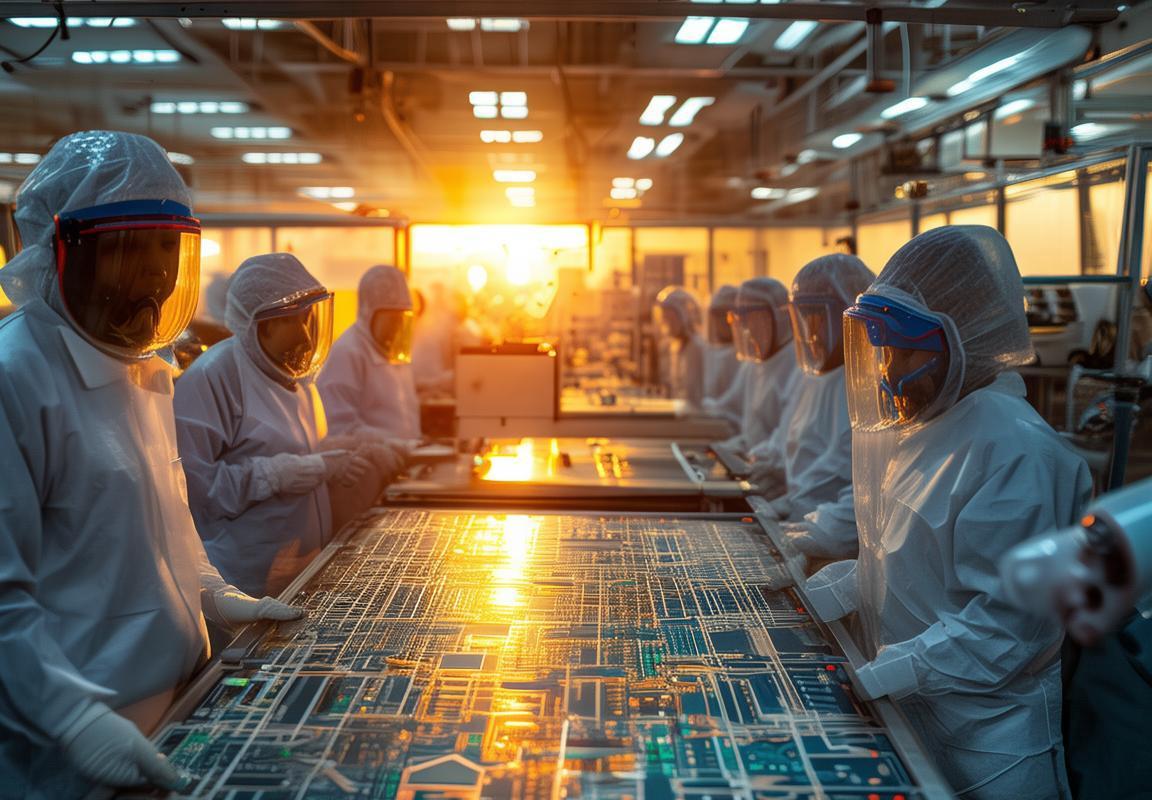
The Precision and Automation in IC Board Production
In the heart of an IC board factory, precision and automation are the cornerstones of production. The process is a symphony of meticulously calibrated machines and skilled technicians, all working in harmony to create the intricate circuits that power our modern world.
The manufacturing floor is a testament to technological advancement, with rows of automated assembly lines stretching out as far as the eye can see. Each station is a precision instrument, designed to handle specific tasks with the utmost care. Workers move through the lines, often with minimal interaction, as the machines take over the repetitive and delicate tasks.
The first station on the line is where the raw materials are prepared. Substrates, typically made of glass or ceramic, are meticulously cleaned and inspected for any imperfections. These materials are then cut to size using high-precision laser cutters, ensuring that each piece is perfect for the next stage of production.
Once the substrates are prepared, they move to the chemical etching area. Here, a series of chemical baths are used to remove unwanted materials and create the necessary patterns for the circuitry. The process is controlled by computer algorithms that dictate the timing and concentration of each chemical, guaranteeing that the circuits are etched with pinpoint accuracy.
The next step involves the application of a thin layer of copper onto the substrate. This is done through a process called electroplating, where a controlled electric current deposits copper onto the surface. The thickness of the copper layer is crucial, as it determines the conductivity and durability of the final IC board. Advanced robots handle the electroplating process, ensuring a consistent and uniform layer every time.
After the copper layer is applied, it’s time for the photolithography process. Here, a light-sensitive chemical is applied to the copper surface, which is then exposed to light through a mask that contains the circuit pattern. The exposed areas harden, while the unexposed ones are washed away, leaving a clear image of the circuit on the board. This process is repeated for multiple layers, each with its own set of circuits and connections.
The boards then move to the etching station for the final copper layer. This time, the etching is done with a precision laser, which can cut through the copper with incredible accuracy. The result is a complex web of circuits that are just millimeters wide.
The next phase is the drilling of holes. These holes, known as vias, are necessary for electrical connections between the layers of the IC board. A high-speed drilling machine, controlled by computer software, drills thousands of holes in a matter of minutes, each with exact dimensions and placement.
Once the holes are drilled, the boards are moved to the soldering station. Here, a series of automated machines apply solder paste to the pads of the board, which is then reflowed in a controlled oven. This process ensures that the connections are secure and reliable.
The boards are then tested for functionality. Automated test equipment (ATE) is used to apply electrical signals and measure the responses, ensuring that every board meets the stringent quality standards. If a board fails the test, it is immediately flagged for inspection and repair.
Throughout this entire process, the emphasis is on precision and automation. The machines are designed to work with incredible speed and accuracy, reducing the margin for human error. Technicians monitor the process from a control room, using advanced software to manage the production line and make real-time adjustments if necessary.
The result is a board that is not just functional but also highly efficient and durable. The precision and automation in IC board production are what make it possible to create the complex and reliable circuits that are the backbone of modern electronics. It’s a testament to human ingenuity and the relentless pursuit of technological excellence.
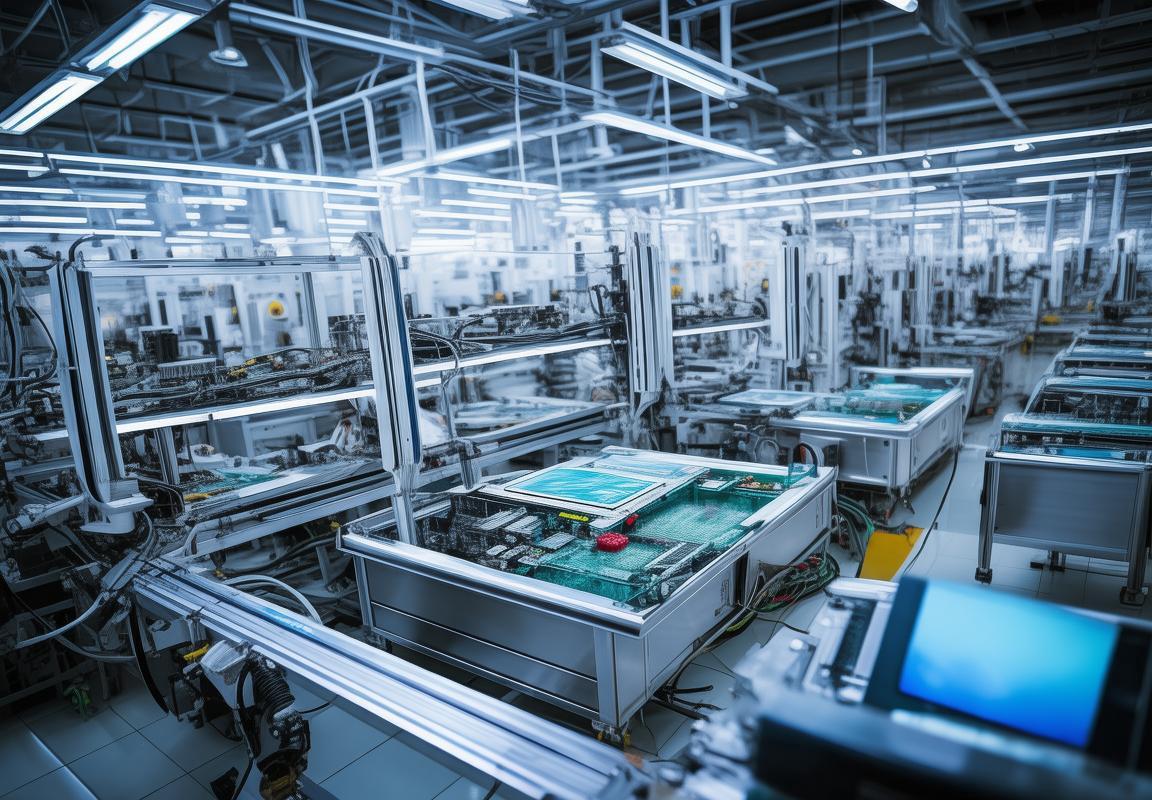
Quality Control: Ensuring Excellence in Every Board
In an IC board factory, the quest for perfection is relentless. Each board that rolls off the assembly line is a testament to the meticulous quality control processes that are in place. Here’s a glimpse into how excellence is ensured in every single board produced:
The production process begins with meticulous planning and design. Engineers meticulously map out the layout of each circuit, ensuring that every trace and pad is in the perfect location. This phase is critical, as any errors in design can lead to faulty boards later on.
Once the design is finalized, the boards are prepared for manufacturing. This involves cutting and etching the copper layers onto a substrate. Advanced machines, equipped with high-precision lasers and chemical baths, perform these tasks with surgical precision. The etching process must be exact, as even the smallest imperfection can disrupt the flow of electricity.
After the copper layers are in place, the next step is to apply the various layers of materials that make up the circuit. This includes insulating materials, conductive tracks, and protective coatings. Each layer is applied using techniques like silk screening, which ensures uniformity and minimizes the risk of human error.
Quality control is woven into every stage of the manufacturing process. Automated optical inspection (AOI) systems constantly scan the boards for any defects, such as missing traces or incorrect pad sizes. These systems can detect issues that the human eye might miss, thanks to their high-resolution cameras and advanced algorithms.
The boards are then subjected to electrical tests. These tests verify that the connections between the various components are sound and that the circuit functions as intended. Automated test equipment (ATE) applies precise voltages and measures the resulting currents, checking for any anomalies that could indicate a problem.
One of the most critical aspects of quality control is ensuring that the boards are free from contaminants. Dust, grease, and other particles can cause shorts or affect the performance of the circuit. Clean rooms are used to maintain an extremely low level of particulate matter, and employees wear specialized clothing to prevent contamination.
After the boards pass the electrical tests, they undergo a series of environmental stress tests. These tests expose the boards to extreme temperatures, humidity, and vibrations to simulate the conditions they might face in the field. If a board fails one of these tests, it is flagged for further investigation and potential rework.
The final stage of quality control is packaging. Each board is carefully packaged to protect it from damage during shipping. Anti-static bags and bubble wrap are commonly used, and the packaging is often checked for integrity before being sealed.
Even after the boards are packaged, the quality control process continues. Random samples are pulled from each batch and subjected to rigorous testing to ensure that the entire batch meets the required standards. This post-production inspection is crucial for maintaining the reputation of the factory and the trust of its customers.
In the world of IC board manufacturing, the stakes are high. The performance and reliability of these boards can affect everything from smartphones to spacecraft. That’s why every single board is treated as a potential masterpiece, scrutinized at every turn to ensure that it not only meets but exceeds the highest standards of quality. It’s this unwavering commitment to excellence that sets the best IC board factories apart from the rest.
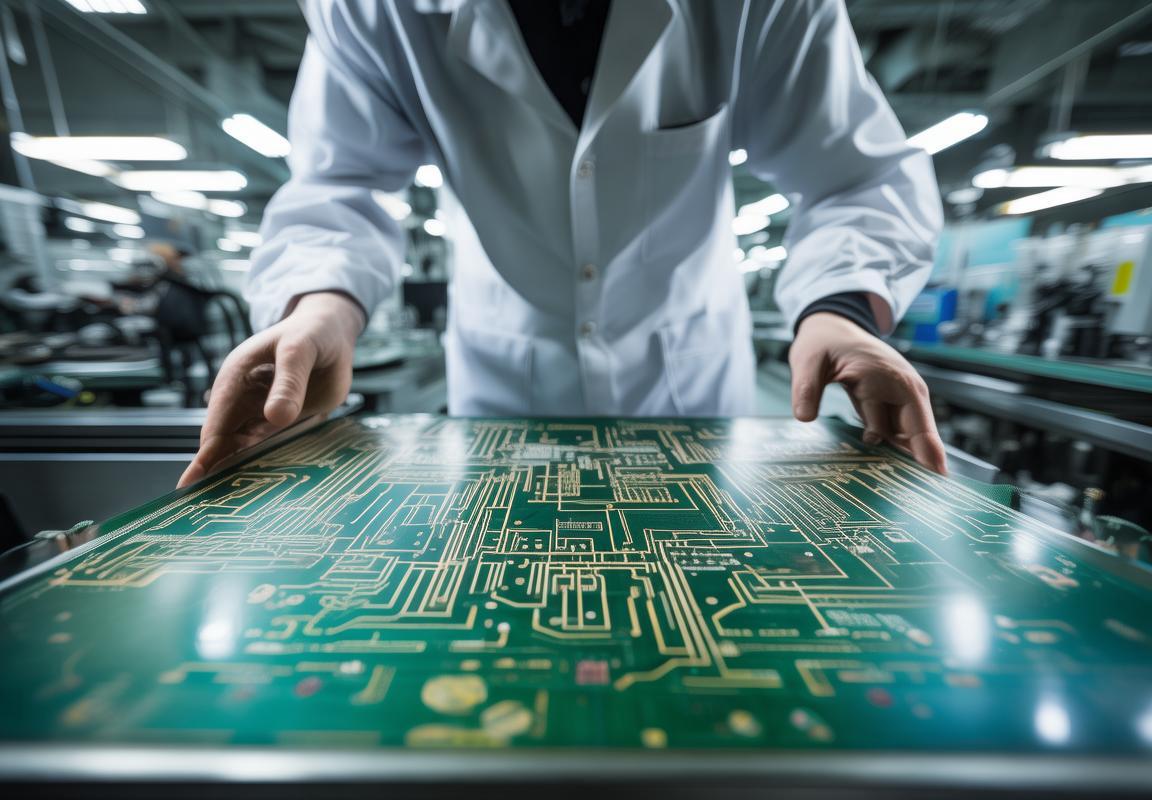
The Impact of IC Board Factories on Modern Electronics
In the digital age, the impact of IC board factories on modern electronics is profound and multifaceted. These factories are the backbone of the tech industry, producing the intricate circuits that power our devices. Here’s a closer look at how they shape the landscape of electronics:
The miniaturization of components is a testament to the prowess of IC board factories. Once bulky and heavy, today’s electronic devices are sleek and portable, all thanks to the precision and innovation of these factories. From smartphones to laptops, the reduction in size has not only made gadgets more convenient but has also opened doors for new applications and industries.
The efficiency of power consumption has been revolutionized by IC board factories. Advanced integrated circuits allow for more energy-efficient designs, extending battery life and reducing the environmental footprint of electronic devices. This shift is crucial in an era where sustainability is a top priority, and IC boards play a pivotal role in this green transition.
Innovation is the lifeblood of IC board factories, and their contributions to the tech industry are immense. These factories are at the forefront of developing new materials, processes, and technologies that push the boundaries of what’s possible. From high-speed processors to flexible circuits, the advancements in IC board production have led to groundbreaking products that enhance our daily lives.
The global reach of IC board factories is unparalleled. They supply components to manufacturers worldwide, ensuring that electronic devices are produced at scale and with consistent quality. This global supply chain is a complex web of collaboration and logistics, with factories often located in regions where skilled labor and favorable conditions for production exist.
The demand for high-quality, reliable components has spurred IC board factories to implement rigorous quality control measures. Each board undergoes a series of tests and inspections to ensure it meets the stringent standards required for modern electronics. This commitment to quality is essential for the longevity and performance of electronic devices.
The rapid pace of technological advancement demands that IC board factories adapt quickly. They must stay abreast of new trends and consumer needs, often leading the way in developing cutting-edge solutions. This agility is critical in a market where obsolescence can happen within a matter of months.
IC board factories are not just producers of components; they are also hubs of knowledge and expertise. They employ engineers and technicians who are experts in their field, contributing to the collective intelligence that drives the tech industry forward. This pool of talent is instrumental in solving complex problems and developing new technologies.
The impact of IC board factories extends beyond the physical components they produce. They also play a role in fostering innovation and economic growth. By providing the building blocks for new products, these factories enable startups and established companies alike to bring their ideas to market.
The environmental considerations of IC board factories cannot be overlooked. As the industry has grown, so has the awareness of the need for sustainable practices. Factories are increasingly investing in eco-friendly technologies and processes, from recycling materials to reducing energy consumption, to minimize their ecological footprint.
The role of IC board factories in the development of smart technologies is significant. From IoT devices to autonomous vehicles, the intelligence embedded in these boards is what enables devices to communicate, learn, and perform complex tasks. This intelligence is the driving force behind the fourth industrial revolution.
In conclusion, the impact of IC board factories on modern electronics is vast and far-reaching. They are the unsung heroes of the tech industry, providing the essential components that enable the devices we rely on every day. Their contributions to innovation, efficiency, and quality are indispensable, and their role in shaping the future of electronics is undeniable.
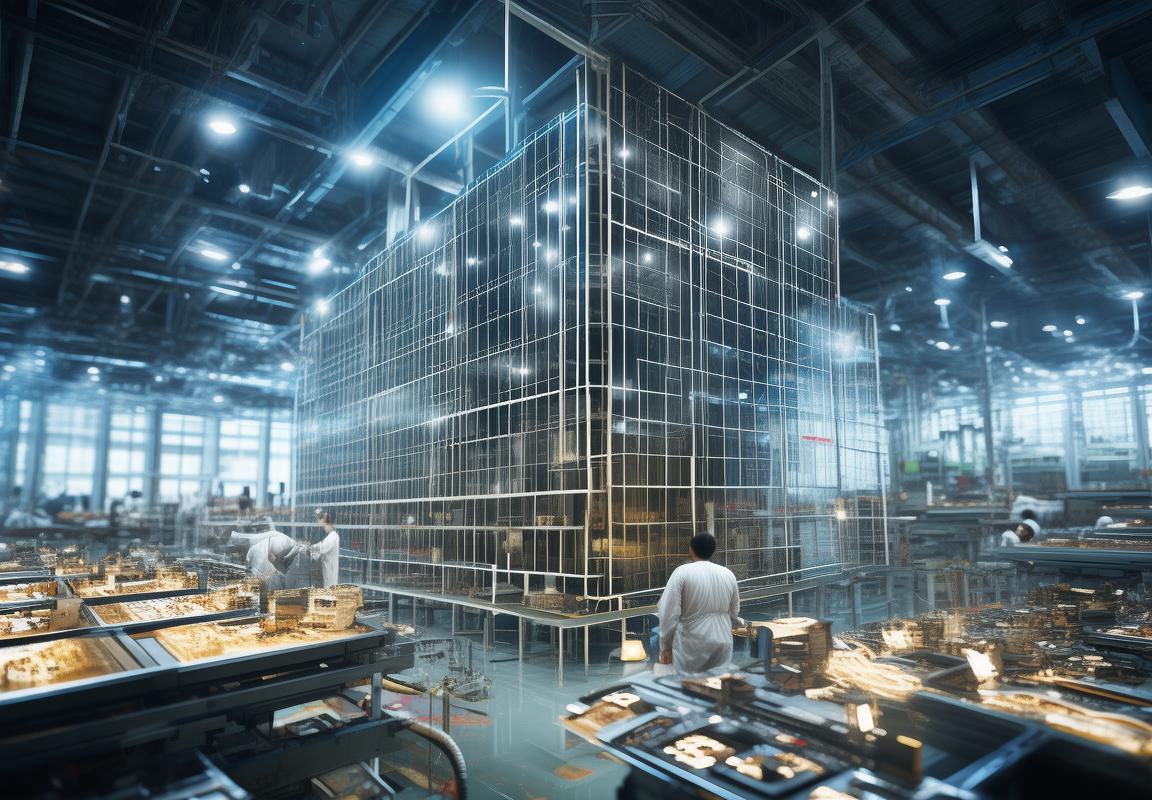
Innovations and Future Trends in IC Board Manufacturing
In the ever-evolving world of technology, the manufacturing of integrated circuit (IC) boards has become a cornerstone of innovation. From the smallest microcontrollers to the most complex processors, these boards are the heart of modern electronics. Let’s delve into the innovations and future trends shaping the landscape of IC board manufacturing.
The miniaturization of components has led to the development of sophisticated IC boards that are not only smaller but also more powerful. This trend has been driven by the need for greater efficiency and portability in devices, from smartphones to medical equipment. The ability to pack more circuits into a smaller space has been achieved through advancements in material science and the refinement of manufacturing processes.
One of the most significant innovations in IC board manufacturing is the adoption of high-density interconnect (HDI) technology. HDI allows for finer lines and spaces, enabling more complex circuits to be etched onto the board. This has opened up new possibilities for multi-layer boards, where multiple layers of copper are stacked and interconnected to create a dense, compact design.
3D IC technology is another groundbreaking advancement. By stacking chips vertically, designers can reduce the overall size of a device while increasing its processing power. This has become particularly crucial in the development of high-performance computing and data storage solutions.
Automation has revolutionized the manufacturing process, making it more efficient and precise. Advanced robots and automated systems are now capable of handling tasks that were once the realm of skilled human labor. These systems can place components with nanometer-level accuracy, ensuring that every IC board meets the stringent quality standards demanded by the industry.
The rise of artificial intelligence (AI) and machine learning (ML) has further propelled innovation in IC board manufacturing. AI algorithms can predict defects before they occur, allowing for proactive quality control. ML systems can analyze vast amounts of data to optimize manufacturing processes, reducing waste and improving yield.
In terms of future trends, one of the most anticipated developments is the use of flexible IC boards. These substrates can bend and twist without damaging the circuits, which is ideal for wearable technology and IoT devices. The ability to create circuits on flexible materials could lead to a new wave of product designs that are both functional and aesthetically pleasing.
Another trend is the move towards environmentally friendly manufacturing processes. As concerns over sustainability grow, IC board manufacturers are looking for ways to reduce their carbon footprint. This includes the use of recyclable materials, energy-efficient manufacturing equipment, and waste reduction strategies.
The integration of advanced packaging techniques is also on the horizon. These techniques, such as fan-out wafer-level packaging (FOWLP), allow for even more compact and efficient devices. FOWLP involves bonding the die directly to the substrate, which can significantly reduce the package size and improve signal integrity.
The Internet of Things (IoT) is another area that is expected to drive innovation in IC board manufacturing. As more devices become connected, the demand for smaller, more efficient IC boards will increase. This will necessitate the development of specialized IC boards that can handle the complex communication protocols and data processing requirements of IoT applications.
Lastly, the industry is seeing a trend towards customization. As devices become more diverse, the need for customized IC boards that cater to specific application requirements is growing. This requires a flexible manufacturing process that can adapt to a wide range of designs and specifications.
In conclusion, the field of IC board manufacturing is continually evolving, driven by the demands of a technology-driven world. Innovations in miniaturization, automation, and sustainability, combined with the integration of AI and new materials, are shaping the future of electronics. As these trends continue to unfold, we can expect to see even more remarkable advancements that will redefine what is possible in the world of modern electronics.
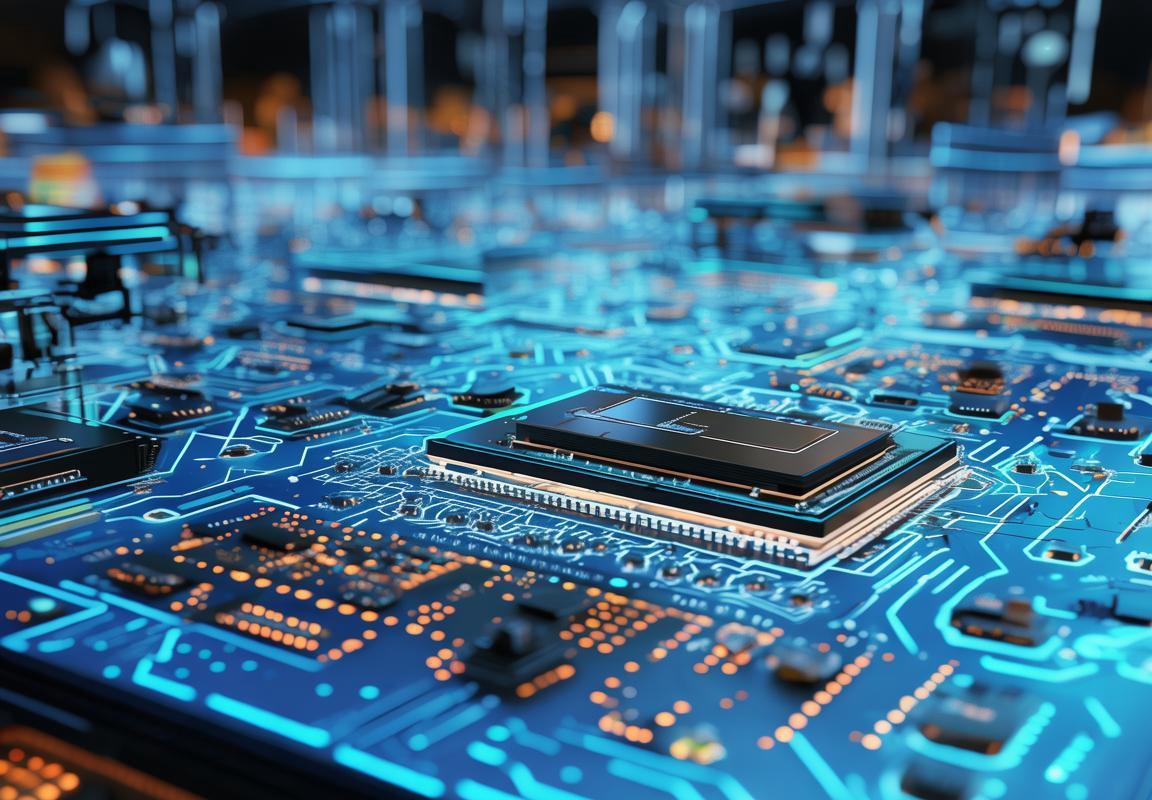
Sustainability Practices in IC Board Factories
In the pursuit of efficiency and eco-friendliness, IC board factories have increasingly adopted sustainable practices. These initiatives range from the sourcing of materials to the management of waste and energy consumption. Here’s a glimpse into how these factories are making a greener impact.
The choice of materials is a cornerstone of sustainability in IC board manufacturing. Recycled and sustainable materials are preferred to reduce the environmental footprint. From using recyclable plastics for housing to sourcing lead-free solders, every effort is made to minimize the use of harmful substances.
Energy conservation is another critical aspect. Factories have invested in advanced lighting systems that automatically adjust to the amount of natural light available, reducing the need for artificial illumination. Solar panels and energy-efficient machinery are also common, significantly cutting down on the energy bill and carbon emissions.
Waste management is meticulously planned. PCB manufacturing generates a considerable amount of hazardous waste, including chemicals and solvents. Factories have implemented rigorous recycling programs for these materials, ensuring they are disposed of safely and do not end up in landfills. Moreover, non-hazardous waste is separated and sent for recycling, reducing the amount of waste that goes to landfills.
Water usage is carefully monitored and managed. Many factories have installed water recycling systems to reuse water in their manufacturing processes, thereby conserving this precious resource. Additionally, they invest in water-saving technologies and practices, further reducing the overall water consumption.
Employee education and involvement are pivotal in promoting sustainability. Factories often conduct training sessions on eco-friendly practices, encouraging workers to adopt greener habits in their daily routines. This includes everything from energy-saving office practices to responsible waste disposal.
The design phase of IC board production is also a focal point for sustainability. By optimizing the layout of the boards, factories can reduce the amount of material needed, thus reducing waste. Advanced design software allows engineers to create more efficient boards with fewer layers, lessening the environmental impact.
Innovation in manufacturing processes continues to push the boundaries of sustainability. The development of low-VOC (volatile organic compounds) and no-clean soldering techniques has minimized the release of harmful substances into the environment. These advancements not only protect the health of workers but also the broader ecosystem.
Collaboration with suppliers is key. Factories work closely with their vendors to ensure that the raw materials they provide are sourced responsibly and sustainably. This often involves verifying that suppliers adhere to ethical practices and environmental standards.
Sustainability reporting and transparency are also crucial. Factories that prioritize sustainability often publish detailed reports on their environmental impact, detailing their initiatives and progress. This transparency not only holds them accountable but also encourages other manufacturers to follow suit.
Lastly, the commitment to continuous improvement is unwavering. IC board factories understand that sustainability is not a one-time effort but an ongoing journey. They invest in research and development to find new ways to reduce their environmental footprint, ensuring that their operations remain sustainable well into the future.
By integrating these practices into their daily operations, IC board factories are not only ensuring the quality and reliability of their products but also contributing to a healthier planet. The collective efforts of these factories are a testament to the power of innovation and corporate responsibility in the face of environmental challenges.
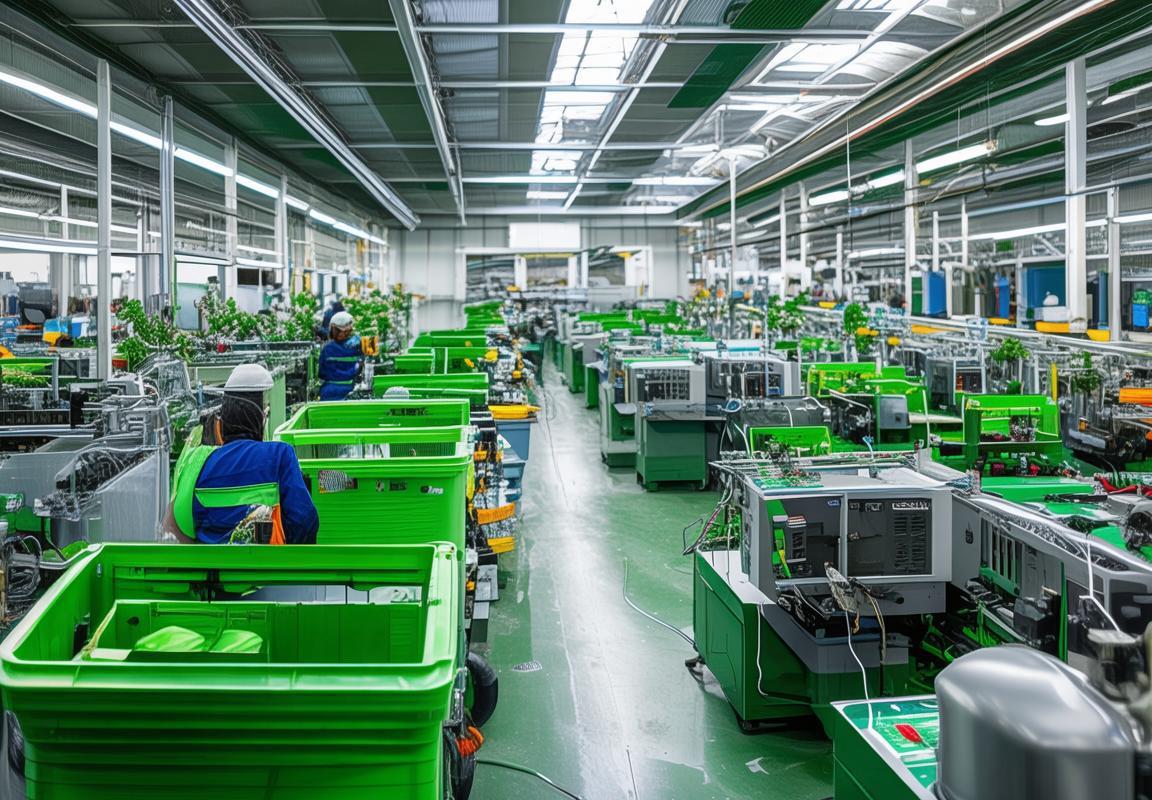
Case Study: A Leading IC Board Factory’s Success Story
In the heart of the bustling industrial park, there lies a beacon of innovation and efficiency—a leading IC board factory that has become synonymous with excellence. This factory’s story is one of relentless pursuit, cutting-edge technology, and a vision for the future. From its humble beginnings to its current status as a global leader, the journey of this IC board factory is a testament to the power of innovation and dedication.
The factory’s origins trace back to a time when the world was just beginning to embrace the digital revolution. It started as a small operation, with a handful of engineers and a dream to produce high-quality IC boards. Over the years, it has expanded, integrating state-of-the-art equipment and attracting top talent from around the globe.
The factory’s success can be attributed to its relentless focus on innovation. It has invested heavily in research and development, constantly pushing the boundaries of what is possible in IC board manufacturing. This commitment has led to the creation of groundbreaking technologies that have set new standards in the industry.
One of the most remarkable aspects of this factory is its emphasis on precision. Every step of the manufacturing process is meticulously controlled to ensure that the final product meets the highest quality standards. Advanced machines and automated systems are employed to achieve this level of precision, minimizing human error and maximizing output.
The factory’s workforce is another key to its success. Employees are trained to the highest standards and are encouraged to think creatively and contribute to the ongoing improvement of processes. This culture of innovation and collaboration has fostered a sense of pride and ownership among the team members.
As technology continues to evolve, the factory has remained at the forefront of innovation. It has embraced new materials and manufacturing techniques, such as 3D printing and nanotechnology, to produce IC boards that are lighter, more durable, and more efficient. These advancements have not only improved the performance of electronic devices but have also opened up new possibilities for the industry.
The environmental impact of manufacturing processes is a growing concern, and this factory has taken significant steps to address it. It has implemented sustainable practices throughout its operations, from energy-efficient lighting to the recycling of manufacturing waste. These efforts have not only reduced the factory’s carbon footprint but have also set an example for other manufacturers to follow.
The factory’s success story is not just about technological advancements; it’s also about the global reach it has achieved. Its products are now used in a wide range of industries, from automotive to aerospace, and its reputation for quality and reliability has earned it a place among the world’s most trusted brands.
One of the most notable aspects of the factory’s operations is its supply chain management. It has developed a sophisticated network of suppliers and partners, ensuring a steady flow of raw materials and components. This strategic approach has allowed the factory to maintain high production levels without compromising on quality.
The factory’s leadership has played a crucial role in its success. The management team is composed of industry veterans who have a deep understanding of the market and a clear vision for the future. Their ability to adapt to changing market conditions and invest in new technologies has kept the factory ahead of the curve.
As the factory looks to the future, it is committed to staying at the forefront of technological innovation. It is investing in emerging technologies such as artificial intelligence and the Internet of Things (IoT), which are expected to revolutionize the electronics industry. The factory is also exploring ways to further integrate sustainability into its operations, ensuring that it remains a responsible corporate citizen.
The story of this leading IC board factory is a remarkable one, filled with challenges and triumphs. It is a story of perseverance, innovation, and a dedication to excellence that has made it a beacon of success in the global electronics industry. As it continues to push the boundaries of what is possible, its journey is an inspiration to all those who dream of making a difference in the world of technology.